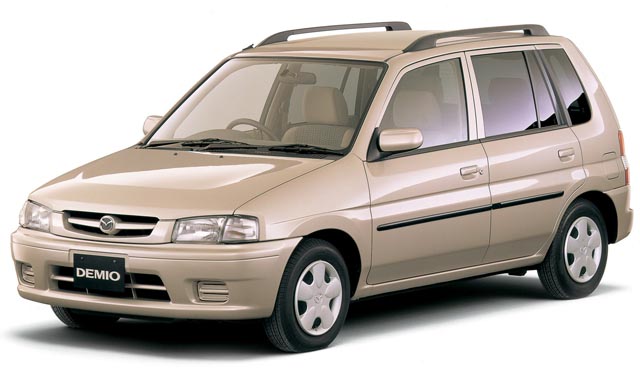Mazda Motor Corporation announced today that it has developed a fuel cell electric vehicle, the Demio FCEV. The company will exhibit the Demio FCEV at "Eco Japan '97" under the auspices of the Ministry of International Trade and Industry and others, from December 5-9 in Kyoto, Japan.
The company intends to use the "Demio FCEV" as an experimental prototype to evaluate its driveability, control system and fuel efficiency. Maximum speed capability is expected to be 90km/h; the driving range is 170km per full charge of hydrogen.
The Demio FCEV uses the Mazda Demio, a small passenger car, as its base, powered by a fuel cell system which generates electricity through the electrochemical reaction between hydrogen and oxygen. The Demio FCEV's fuel cell system is composed of: a polymer electrolyte fuel cell stack to generate electricity; a metal hydride hydrogen storage tank to supply hydrogen into the fuel cell stack; a small air compressor to feed oxygen (air) into the fuel cell stack.
A characteristic of Mazda's fuel cell system is its compactness derived from elimination of the external air humidifier. The polymer electrolyte membrane should always contain water for its fuel cell operation. In the conventional polymer electrolyte fuel cell system, hydrogen and air are externally humidified. However, Mazda's fuel cell effectively uses water which is produced in the electro-chemical reaction process, and it eliminates the external air humidifier which normally occupies 15 percent of the volume of the fuel cell stack.
Mazda has also adopted an ultracapacitor, durable under repetitive use, which provides supplemental electricity by charging and discharging electricity required for acceleration.
Find more news and information at www.mazda.com




